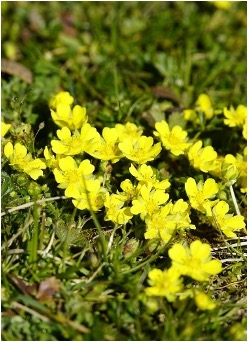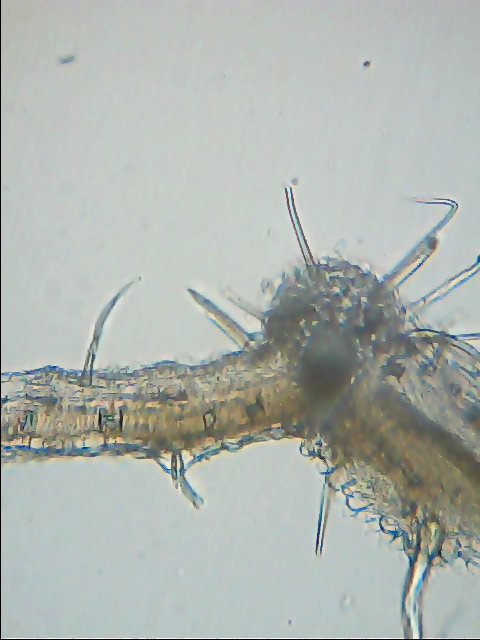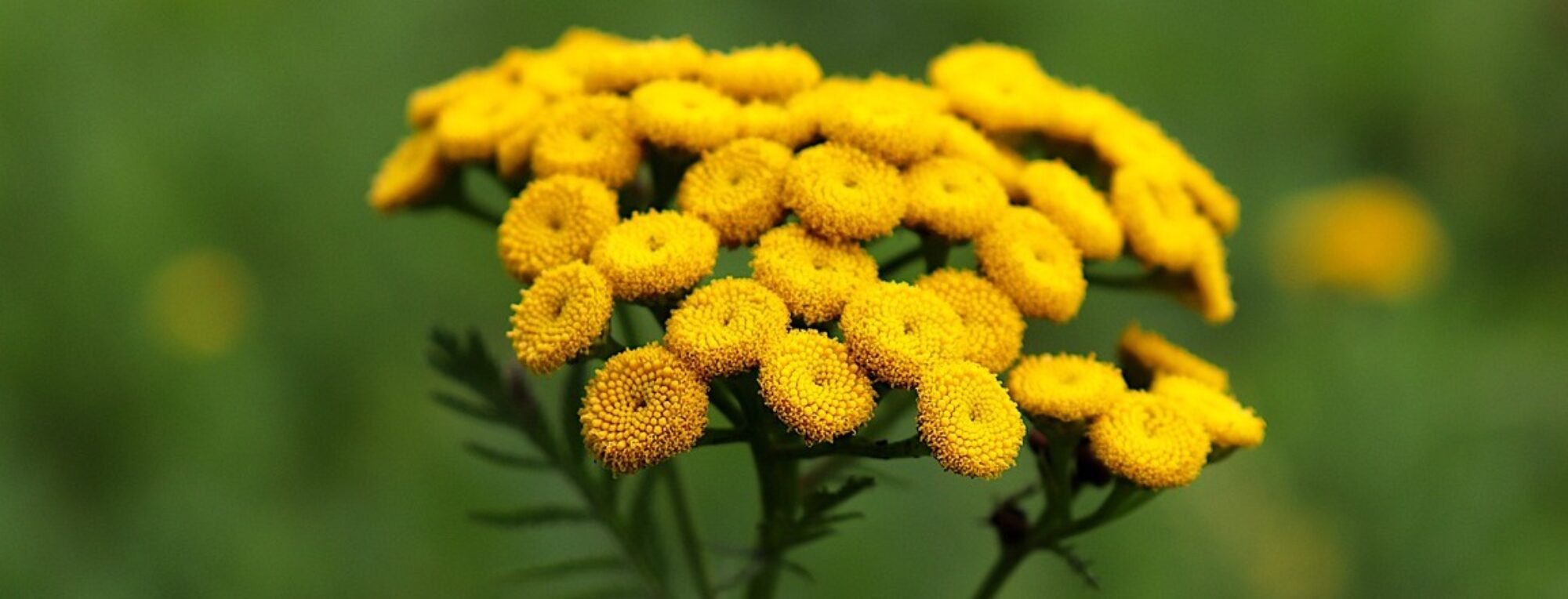
English name: Silverweed, Goose-grass
Family: Rosaceae
Botanical characteristic: A perennial plant with a hairy, creeping stem that grows up to 80 cm long. The ground leaves are alternately arranged in a rosette, feathery-folded, ovate in shape. The five-petalled flowers are deep yellow in colour and grow singly on long peduncles. The fruit is an achene.
Microscopic drawing:


Distribution: The goose-grass is found almost all over Europe on moist soils, at the edges of streams and ponds, on poor, non-calcareous soils.
Drug: Anserinae herba
Harvesting method: The flowering panicle is harvested with secateurs between May and August. It is susceptible to scorching and is therefore collected in airtight containers. It flowers from May to August.
Drying: The goose-grass is dried naturally in a thin layer in a dark, ventilated room. The dried drug has no taste or smell.
Active substances: The goose-grass contains mainly catechin tannins. Flavonoids, triterpenes and organic acids are also present in the drug.
Použitie: The groose-grass is used internally for non-specific acute diarrhea or mild inflammation of the mucous membranes of the gastrointestinal tract. The decoction can be used for gargling or mouth rinses for bleeding gums.
Traditional method of use in indications determined solely on the basis of long-term use:
– symptomatic treatment of mild diarrhea,
– symptomatic treatment of minor inflammations in the oral cavity.
Selected herbal preparations: AGROKARPATY GOOSEGRASS HERBAL TEA 1×30 g, AGROKARPATY ROUGH GUT herbal tea, 20×2 g, Calendula Diabetics cps 30 pcs.
